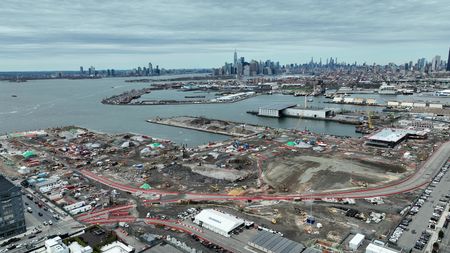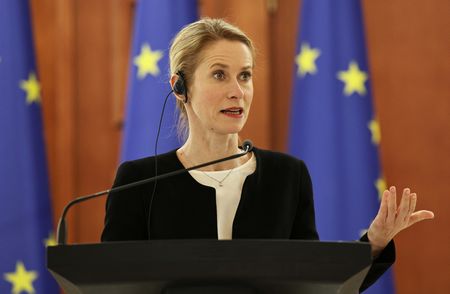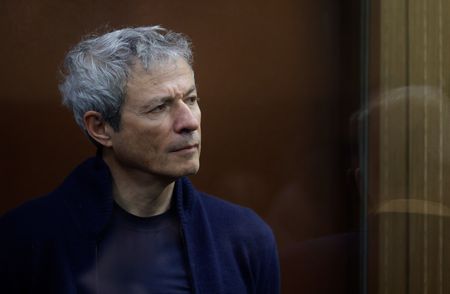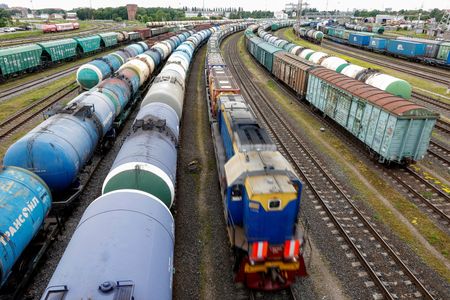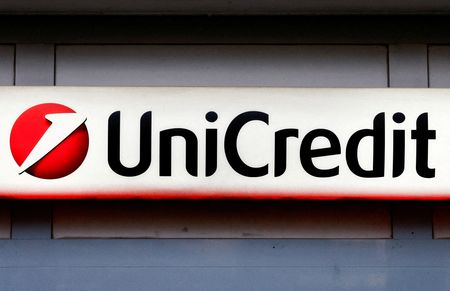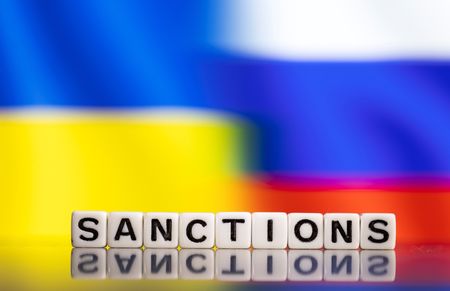By Nichola Groom and Nora Buli
LOS ANGELES/OSLO (Reuters) -The Trump administration has lifted a month-old stop-work order on Empire Wind, a $5 billion wind farm project off the coast of New York, in a compromise with the state that could also see cancelled plans for a gas pipeline revived, officials said on Tuesday.
Norway’s Equinor said construction work can now resume on the project, which is expected to provide power for half a million homes from 2027 onwards.
Shares in Equinor, which is mostly reliant on oil and gas, were up by 1.5% by 1016 GMT.
Denmark’s Orsted, the world’s largest offshore wind farm developer, which is constructing two plants off the coast of the United States, saw its shares jump by 15%.
U.S. Interior Secretary Doug Burgum, who had issued the stop order on Empire Wind on April 16, said he was encouraged that New York Governor Kathy Hochul will now allow new gas pipeline capacity to move forward.
The deal could revive plans to build the proposed Constitution natural gas pipeline from Pennsylvania to New York, which was cancelled in 2020 after years of regulatory and legal battles over environmental and other concerns.
“Americans who live in New York and New England would see significant economic benefits and lower utility costs from increased access to reliable, affordable, clean American natural gas,” Burgum wrote in a post on X on Monday.
Hochul in a statement said New York would work with the U.S. administration and private entities on projects that meet the legal requirements under New York law.
“The road ahead for the Constitution Pipeline remains bumpy, but the broad strokes of a logical deal could be a win-win for end users,” analysts at energy consulting firm EBW Analytics said in a note.
Officials at U.S. energy firm Williams Cos, one of Constitution Pipeline’s joint venture partners, were not immediately available for comment. With U.S. President Donald Trump back in office and voicing his support for the Constitution project, executives at Williams have said the company was looking at dusting off plans for the pipeline under the right circumstances.
Norwegian Finance Minister Jens Stoltenberg, a former NATO chief who had discussed Equinor’s case with U.S. policymakers, said the deal to unblock the wind farm was ultimately a matter to be settled between U.S. authorities.
“This is an agreement about natural gas and wind made in the United States,” Stoltenberg told reporters in Oslo.
More broadly, he said the reversal was good news for investors in the U.S. as the stop-work order threatened to create uncertainty after permits had been granted by U.S. authorities.
Equinor had warned it stood to lose billions of dollars due to the order which sent shockwaves through the offshore wind industry, raising concerns that fully permitted developments representing billions in investment are not safe.
“This was an extraordinary situation where a fully concepted and approved project was stopped. I take it as a very positive sign that explaining the facts of this has changed the position,” Equinor CEO Anders Opedal told Reuters.
Officials from the U.S. Interior Department, who in issuing the stop-work order said the former Biden administration had rushed the project’s approval without sufficient environmental analysis, were not immediately available for comment.
Opedal said Equinor would give an update on the financial consequences of the delay when reporting second-quarter results on July 23.
Equinor, which had warned it was spending $50 million weekly to keep the project afloat during the suspension, said it would now work with suppliers and regulatory bodies to minimise the impact of the delay.
Equinor purchased the Empire Wind lease during Trump’s first administration in 2017, and the 810-megawatt project was approved under former President Joe Biden in 2023.
The project, which will use wind turbines from Vestas, is 30% complete, according to the company.
Trump has vowed to expand domestic energy production but wind is excluded from that effort. He issued an executive order on his first day in office, pausing new leasing and permitting of wind projects, which he says are ugly, expensive and harmful to wildlife.
An industry group praised the lifting of the stop-work order.
“The administration is clearing the way for major investments to move forward – activating American shipyards, creating high-quality jobs, and accelerating the build out of infrastructure needed to deliver reliable, domestic energy,” National Ocean Industries Association President Erik Milito said in a statement.
The U.S. has four operating offshore wind farms and four under construction including Empire Wind, Orsted’s Sunrise Wind off New York and Revolution Wind off Rhode Island and Dominion Energy’s Coastal Virginia Offshore Wind.
(Reporting by Nichola Groom in Los Angeles and Nora Buli in Oslo, Additional reporting by Stine Jacobsen in Copenhagen, Gwladys Fouche in Oslo and Scott DiSavino in New York; Editing by Chris Reese, Stephen Coates, Terje Solsvik and Andrea Ricci)

